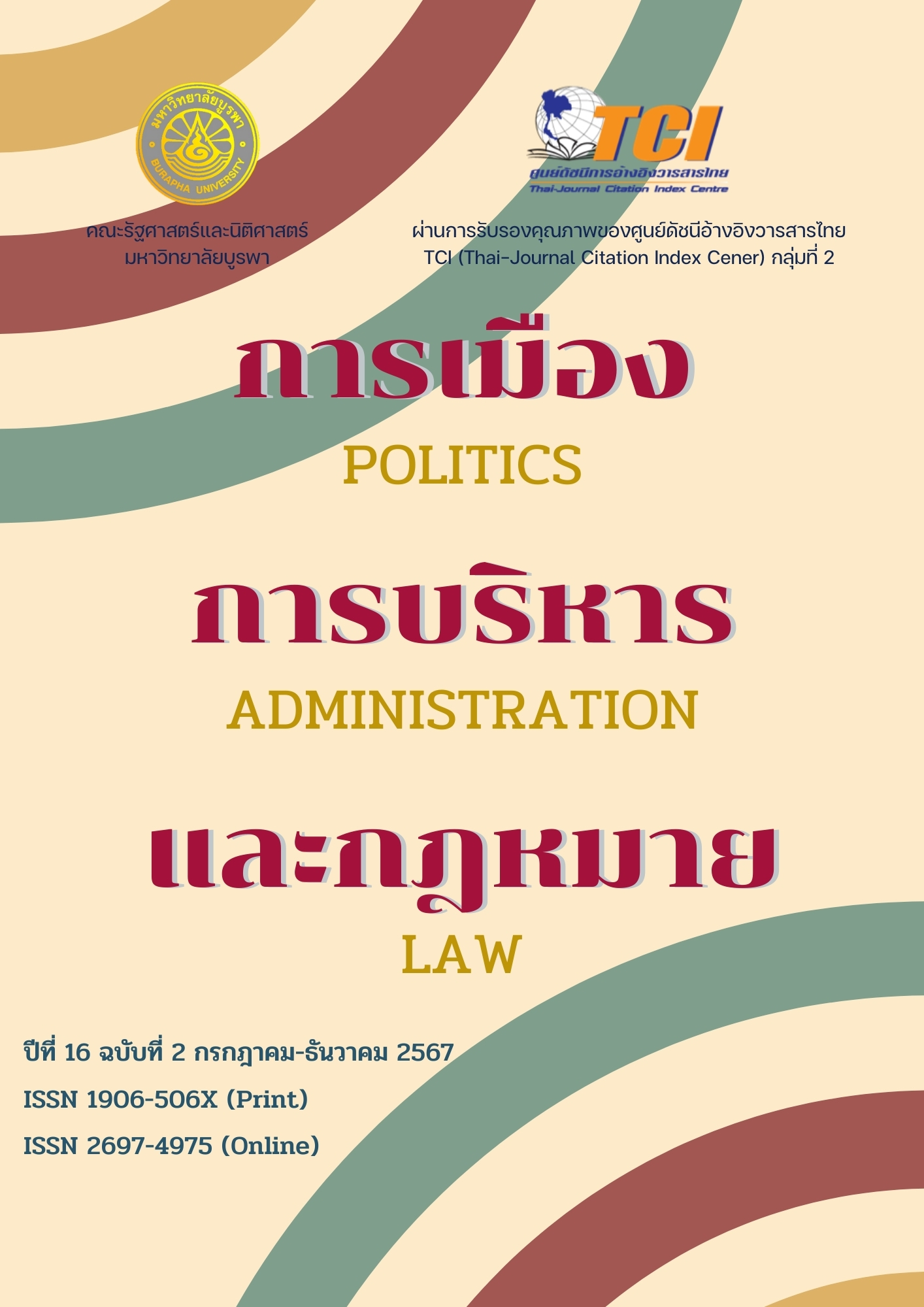การวิเคราะห์นโยบายส่งเสริมการลงทุนตามนโยบายเขตพัฒนาพิเศษภาคตะวันออก
คำสำคัญ:
นโยบาย, การส่งเสริมการลงทุน, เขตเศรษฐกิจพิเศษภาคตะวันออกบทคัดย่อ
การวิจัยครั้งนี้ มีวัตถุประสงค์เพื่อ วิเคราะห์นโยบายส่งเสริมการนำนโยบายส่งเสริมการลงทุนตามนโยบายพัฒนาเขตพิเศษภาคตะวันออก วิเคราะห์การนำนโยบายไปสู่การปฏิบัติ วิเคราะห์ปัญหา และข้อจำกัดของนโยบาย และเสนอแนวทาง ปรับปรุง นโยบาย ใช้วิธีวิจัยเชิงคุณภาพ (Qualitative) เก็บข้อมูลจากการวิเคราะห์เอกสารและการสัมภาษณ์เชิงลึก (in-Depth Interview) ประกอบด้วย 3 กลุ่ม ดังนี้ 1) ผู้บริหารระดับนโยบาย 2) เจ้าหน้าที่ระดับปฏิบัติการระดับพื้นที่ 3)ผู้ประกอบการลงทุน
ผลการศึกษาพบว่า นโยบายการส่งเสริมการลงทุนในเขตพัฒนาพิเศษภาคตะวันออกเป็นนโยบายสำคัญที่รัฐบาลมุ่งหวังให้เกิดการกระตุ้นเศรษฐกิจและการสร้างอุตสาหกรรมและเศรษฐกิจใหม่ ตามนโยบายไทยแลนด์ 4.0 การส่งเสริมดำเนินการโดย 2 องค์การหลัก ได้แก่ การส่งเสริมตามมาตรการของสำนักงานส่งเสริมการลงทุน BOI และมาตรการส่งเสริมโดยสำนักงานเขตเศรษฐกิจพิเศษภาคตะวันออก EEC รูปแบบการส่งเสริมมีความสอดคล้องกันทั้ง 2 องค์การ ได้แก่ การให้สิทธิพิเศษทางภาษี การบริการข้อมูลข่าวสาร การพัฒนาและอำนวยความสะดวกด้านโครงสร้างพื้นฐาน การอำนวยความสะดวกการเงิน การพัฒนาและการเตรียมความพร้อมด้านทักษะแรงงาน และการให้คำปรึกษาสำหรับผู้ที่จะลงทุนความแตกต่างในเรื่องของพื้นที่ในการส่งเสริมการลงทุนใน EEC จำกัดเฉพาะ 3 จังหวัด ระยอง ชลบุรี และฉะเชิงเทรา และมาตรการ EEC ที่จะจูงใจมากกว่าโดยเฉพาะอุตสาหกรรมเป้าหมายที่มุ่งเน้น ปัญหาข้อจำกัด ได้แก่ 1)โครงสร้างการจัดการเป็นรูปแบบคณะกรรมการมาจากหลายหน่วยงานและการจัดการแบบราชการที่ไม่คล่องตัว 2)การเมืองเปลี่ยนบ่อย 3)นโยบายขาดเสถียรภาพ 4) ความซ้ำซ้อนของบทบาท 2 หน่วยงาน ทำให้เกิดความสับสนของผู้ประกอบการ 5)มาตรการเอื้อผู้ประกอบการรายใหญ่และต่างชาติ ผู้ประกอบการรายย่อยไม่ได้ประโยชน์ ขาดแรงงานที่มีทักษะภาษา ไอที และ6)โปรแกรมเมอร์ซึ่งเป็นสิ่งจำเป็นของอุตสาหกรรมใหม่
เอกสารอ้างอิง
ภาษาไทย
แผนยุทธศาสตร์. (2561). แผนยุทธศาสตร์ชาติ 20 ปี. วันที่ค้นข้อมูล 16 กุมภาพันธ์ 2567, เข้าถึงได้จาก https://drive.google.com/file/ผู้ช่วยผู้อำนวยการ ด้านการลงทุน สำนักงานเศรษฐกิจและการลงทุน ณ นครซิดนีย์เครือรัฐออสเตรเลียและ
นิวซีแลนด์. (2567, 2 กุมภาพันธ์). สัมภาษณ์.
ผู้อำนวยการสายงานบริหารและองค์กรสัมพันธ์ โรงไฟฟ้าบีแอลซีพี. (2567, 19 มกราคม). สัมภาษณ์.
รองเลขาธิการสำนักงานคณะกรรมการส่งเสริมการลงทุน. (2567, 19 มกราคม). สัมภาษณ์.
ศุภชัย ยาวะประภาษ. (2550). นโยบายสาธารณะ (พิมพ์ครั้งที่ 7). กรุงเทพฯ: สำนักพิมพ์แห่งจุฬาลงกรณ์มหาวิทยาลัย.
สำนักงานเลขานุการคณะกรรมการยุทธศาสตร์ชาติ สำนักงานคณะกรรมการพัฒนาการเศรษฐกิจและสังคม. (2561). ยุทธศาสตร์ชาติ พ.ศ. 2561 – 2580 (พิมพ์ครั้งที่ 2). กรุงเทพฯ: สำนักงานเลขานุการคณะกรรมการยุทธศาสตร์ชาติ.
อมรรัตน์ เจียระไนรุ่งโรจน์. (2561) การศึกษานโยบายการส่งเสริมการลงทุนของประเทศไทยและ เปรียบเทียบกับประเทศเวียดนาม. วารสารวิจัยและพัฒนาวไลยอลงกรณ์ ในพระบรมราชูปถัมภ์, 13(2). 298-306.
ภาษาอังกฤษ
Dye, T. R. (2005). Understanding Public Policy. New Jersey: Pearson Education.
Easton, D. (1979). A Framework for Political Analysis. Chicago: The University of Chicago.
ดาวน์โหลด
เผยแพร่แล้ว
ฉบับ
ประเภทบทความ
สัญญาอนุญาต

อนุญาตภายใต้เงื่อนไข Creative Commons Attribution-NonCommercial-NoDerivatives 4.0 International License.






